What's New
Displaying results 2271 - 2280 of 4052

Resource | Publications,
The brochure provides analysis of why money matters in ending violence against women and girls, describes the current funding shortfall and challenges in funding landscape, provides information on what it costs to effectively support efforts to end violence against women and girls using regionally-balanced data, and aims to demonstrate the value of investing in efforts to end violence against women and girls by providing examples of impact from the work of UN Women, grantees of the UN Trust Fund to End Violence against Women, and other civil society organizations.
This briefing also aims to reach out to organizations, United Nations Member States and interested individuals with a strong message that increasing their funding of initiatives can make a critical difference. By contributing to efforts to end violence against women, they can also help remove a major barrier to individual, community and national development.
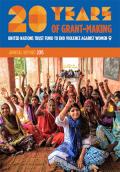
Resource | Publications,
Built upon the generosity of UN Member States and a growing number of private sector partners, the UN Trust Fund is the only global, multilateral, grant-making mechanism that supports national efforts to end violence against women and girls, and its role today is more crucial than ever.
This Annual Report provides an opportunity to celebrate successes in combatting violence against women and girls around the world and to address remaining challenges. Despite the growing recognition that violence against women and girls is a human rights pandemic and a major obstacle to sustainable development, it continues to have an unjustifiably low priority in national planning, programming and budgeting. That is why now is the time to share examples of what works so we can turn talk into concrete action.

Resource | Publications,
Violence in all its forms casts a long shadow over the health of populations and individuals, and several Sustainable Development Goals, notably Goal 5 on gender equality and Goal 16 on peaceful societies, call for efforts to end or significantly reduce violence. Violence affects women, men and girls and boys of all ages.
The plan focuses on violence against women and girls, and against children, while also addressing common actions relevant to all types of interpersonal violence. It also addresses interpersonal violence against women and girls, and against children, in situations of humanitarian emergencies and post-conflict settings, recognizing that such violence is exacerbated in these settings.
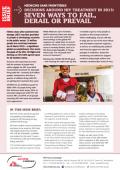
Resource | Publications,
In this issue brief we first review trends in generic competition and intellectual property (IP) licensing for key antiretroviral drugs. We then outline seven momentous decisions to be made in 2015 that will largely determine whether ART will be affordable, available and robust for the next 15 years of treatment scale-up to all people living with HIV. This includes opportunities for greatly improved treatment regimens based on WHO guidelines on when to start treatment, and what first- and second line regimens should include.

Resource | Publications,
The aim of the new initiative is to leverage improved, accessible, affordable and optimally used diagnostic technologies and strategies to ensure achievement of a bold new HIV treatment target for 2020.
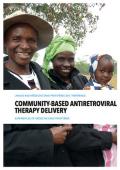
Resource | Publications,
This document presents experiences of how community-based antiretroviral therapy (ART) delivery can improve both the level of access to treatment and the quality of health outcomes for people living with HIV. These experiences illustrate that community-based ART delivery is efficient, effective and high quality.
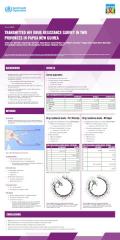
Resource | Data Sheets,
Surveillance of transmitted HIV drug resistance (TDR) in individuals recently infected with HIV was performed following WHO-suggested methods. The prevalence of transmitted HIV drug resistance (TDR) in recently infected antiretroviral drug naïve individuals in PNG has not been fully characterised.

Resource | Publications,
All babies have the right to a healthy start in life.
Every year, approximately 1.5 million HIV-positive women give birth. If they are unable to access medicine and services, they run the risk of transmitting HIV to their babies during pregnancy, delivery and the breastfeeding period.
Now, with only one pill a day started during pregnancy, along with delivery in a medical facility by a skilled health professional and continued treatment through the breastfeeding period, advances in antenatal care mean that the risk of HIV transmission from mother to baby can be virtually eliminated.
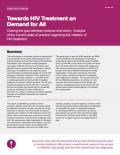
Resource | Publications,
This report, assembled by activists, clinical providers, people living with HIV, and public health practitioners, provides a global overview of the key advances in science, the current state of practice regarding the initiation of HIV treatment around the world, and the policy barriers to ensuring universal access to treatment on demand for all people living with HIV, everywhere.

Resource | Publications,
Launched only a year ago, Fast-Track cities has rapidly taken root and grown. This is the first annual update on progress in implementing the Fast-Track cities approach and it supports one of the seven key commitments contained in the Paris Declaration. This report reflects on the actions taken by cities and by the four core partners— the city of Paris, UNAIDS, the United Nations Human Settlements Programme (UN-Habitat) and the International Association of Providers of AIDS Care (IAPAC)—towards ending the AIDS epidemic as a public health threat by 2030. Future reports will illustrate good practices and quantifiable evidence of progress that will inspire and inform Fast-Track cities and the many stakeholders helping to confront AIDS as a health and development challenge.





